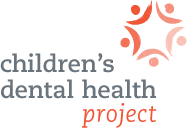School Years and Beyond

Oral health is a smart investment—we can prevent decay. The consequences of untreated decay include ER visits for dental pain and lost time at school and work.
Impact of Tooth Decay:
-
A national survey found that roughly 1 in 7 children ages 6-12 had suffered a toothache in the previous six months
-
Children with poor oral health were nearly 3 times more likely to miss school due to dental pain, according to a North Carolina study.
-
In a Los Angeles study, dental problems were responsible for about 1/3 of elementary school absences, among children from economically vulnerable families.
-
California teens reporting recent dental pain were almost 4 times more likely to have a lower grade-point average than their healthier peers.
-
Infections in the mouth can become life-threatening. A 2013 study examined nine years of data and found that 66 Americans had died from dental abscesses. And more than 61,000 hospitalizations were primarily caused by these abscesses.
-
Prevention pays off. The average cost of applying a dental sealant to a child’s permanent teeth—a practice that reduces the risk of decay—is roughly one-third the cost of filling a cavity.
The bacteria that causes tooth decay is a chronic condition that typically lasts into adulthood—with new costs and consequences.
-
Health equity is an issue for adults too. The CDC found that "over 40% of poor adults (20 years and older) have at least one untreated decayed tooth compared to 16% of non-poor adults."
-
It even affects national security. Defense department officials have called oral health "essential to readiness" of our military forces. The Army reports that more than 1 in 5 National Guard and Reserve soldiers required dental treatments before they could be deployed overseas for Operation Desert Storm. And a 2008 report revealed that 52% of new military recruits had dental problems that delayed their deployment overseas.
-
Poor oral health can affect adults' job prospects and social lives. CNBC reported that most employers "make instant judgments based on appearance, including someone’s smile and teeth.” A 2008 study found that people with missing front teeth were viewed as less intelligent, less desirable and less trustworthy than people with a healthy smile.
-
Dental disease is linked to broader health problems, including cardiovascular disease and strokes. Research has even linked poor oral health with Alzheimer's Disease.
-
A 2013 survey of Los Angeles residents with dental insurance found that 51% delayed dental care because of concerns about the cost.
-
Out-of-pocket spending for dental services—costs not paid by insurance—accounts for about 40% of all dental expenditures
-
The lifetime cost of treating one decayed molar ranges from $2,187 to $6,105.
-
Americans made an estimated 830,590 visits to hospital emergency rooms in 2009 for dental conditions that were preventable.
-
Prevention pays off. In most cities, every $1 spent on water fluoridation saves $38 in dental costs. Researchers estimate that in 2003 Colorado saved nearly $149 million in dental treatment costs because of fluoride in the public water supplies. And a Texas study revealed that fluoridation saved taxpayers $24 per child, per year in state Medicaid costs.
